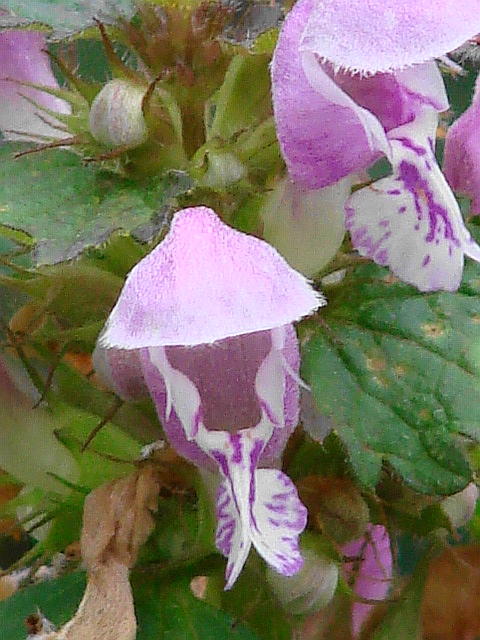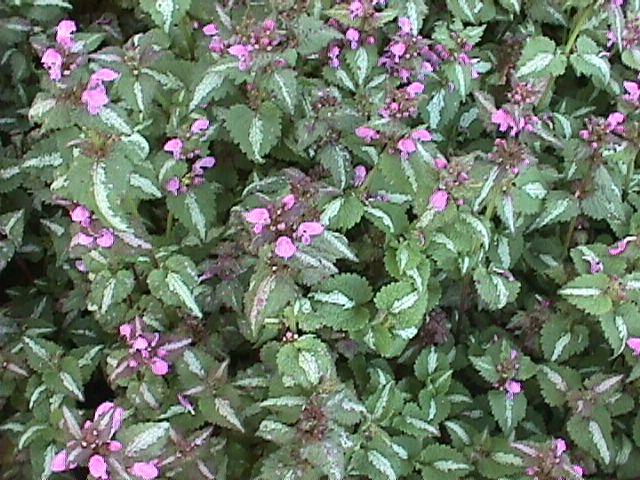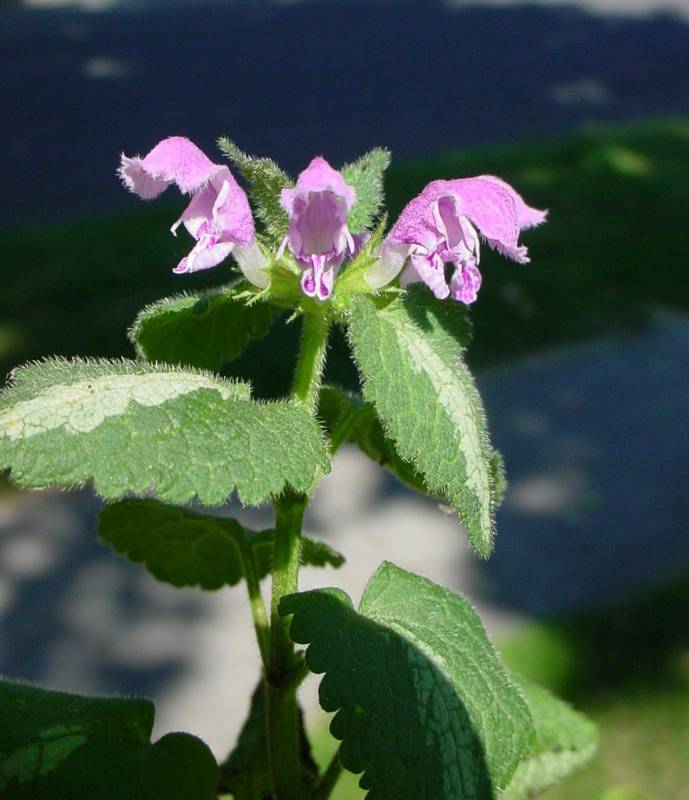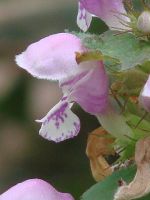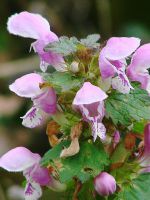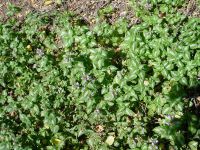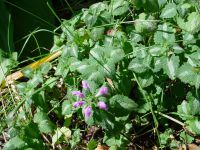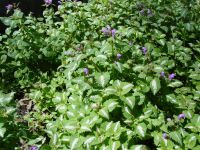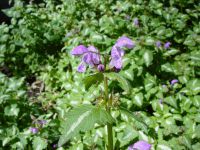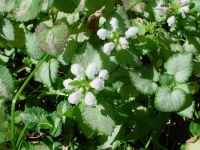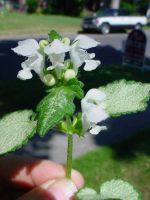Distribution: Occurring chiefly west of the Cascades crest in Washington; Alaska to Oregon, east to Idaho; also in eastern North America.
Habitat: Fields, roadsides, wastelots, and other disturbed areas.
Flowers: April-August
Origin: Introduced from Eurasia
Growth Duration: Perennial
Conservation Status: Not of concern
Pollination: Bumblebees, bees
Fibrous-rooted perennial herbs from a creeping base, decumbent below and rooting, 1.5-7 dm. tall, somewhat stiff-hairy.
Leaves opposite, petiolate, the blade cordate-ovate or triangular-ovate, 1.5-6 cm. long and 1-5 cm. wide, with a broad, white stripe along the mid-vein, the margins with rounded teeth.
Inflorescence of several verticels, more or less crowded, the lower subtended by full-sized leaves, these reduced upward; calyx 5-10 mm. long, with 5 firm, unequal, slender lobes nearly as long as the tube; corolla pinkish-purple, rarely white, two-lipped, 2-2.5 cm. long, curved, hairy outside with a ring of hairs inside, the upper lip hood-like, 7-12 mm. long, rounded, enclosing the 4 stamens; the lower lip spreading, the large, broad center lobe constricted at the base and notched; style 2-parted; ovary superior, 2-celled.
Fruit of 4, 3-sided nutlets.
Publication: Sp. Pl. (ed. 2) 2: 809. 1763.
PNW Herbaria: Specimen records of Lamium maculatum in the Consortium of Pacific Northwest Herbaria database
WA Flora Checklist: Lamium maculatum checklist entry
OregonFlora: Lamium maculatum information
E-Flora BC: Lamium maculatum atlas page
CalPhotos: Lamium maculatum photos

